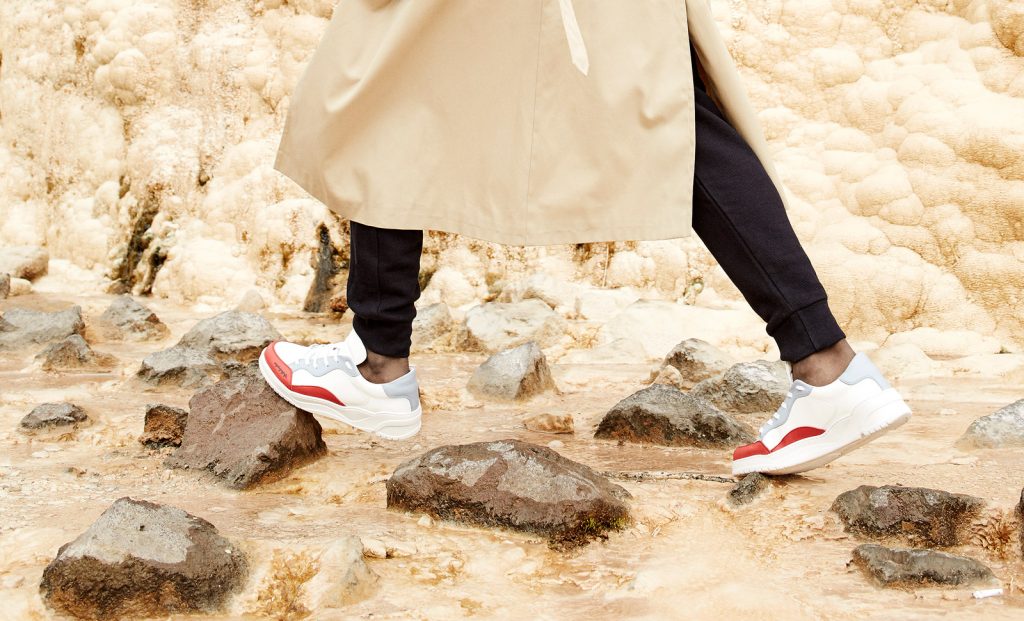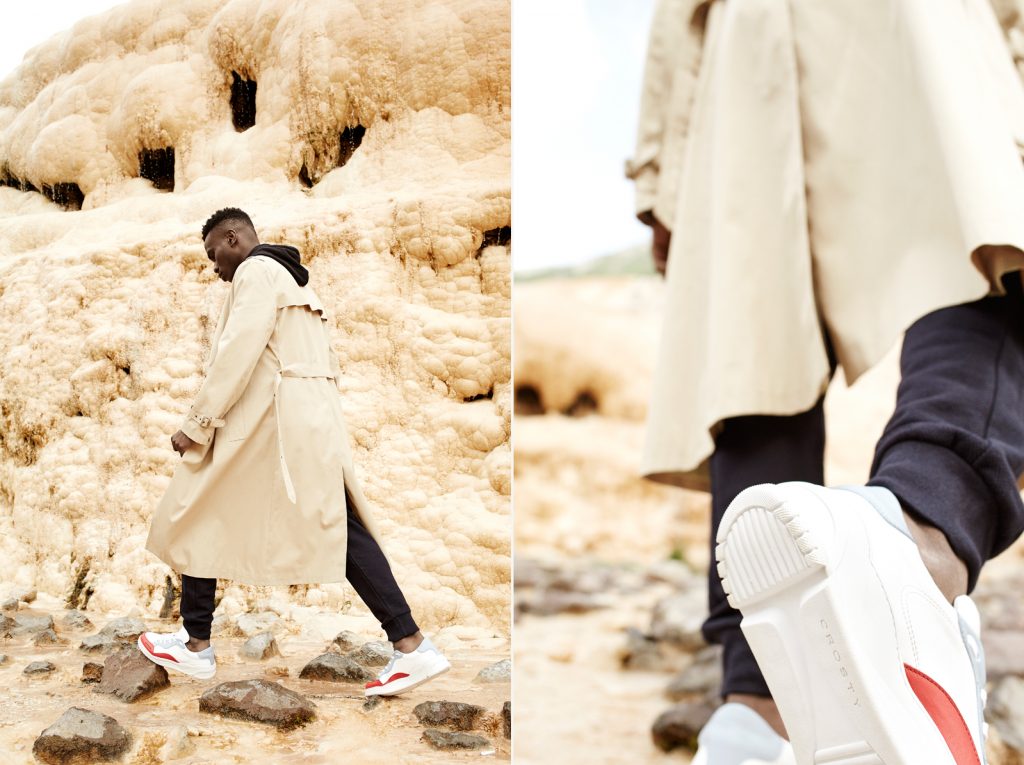Interview: George and Shota Mikaia of Georgian Sneaker Brand, Crosty
Brothers bring footwear innovation to the former Soviet nation decades after a civil war that changed their lives

In 1992, Abkhazia was engulfed in a brutal civil war. Situated on the Black Sea in the northwest of Georgia, the disputed region’s inter-ethnic conflict claimed nearly 15,000 lives, left over 8,000 wounded, and uprooted more than 200,000 Georgians fleeing ethnic cleansing at the hands of Abkhaz separatists. Among the displaced were brothers George and Shota Mikaia, founders of Tbilisi-based sneaker label Crosty. “We lost everything. We had to leave our home, move to Tbilisi, and start over again,” George recalls. “I was four years old at the time.” To escape their reality the siblings embraced soccer and subsequently formed an obsession with trainers. It sustained George and Shota through a difficult move back to Abkhazia in 1998. “All we had before was burnt down,” George (who was nine at the time) says. “We managed to renovate a couple rooms and spend a few years there, but there was nothing for us there. Our family decided to go back to Tbilisi in 2002.”
 Two decades after the war ended, George (a graphic designer and Crosty’s artistic director) and Shota (a marketing professional who’s now responsible for the brand’s e-commerce platform) were still fixated on sneakers. Their search for skilled Georgian craft in footwear proved fruitless. “There were a few factories creating shoes for a local market at the time,” Shota says. “But they weren’t focused on design or quality that could reach beyond their region.”
Two decades after the war ended, George (a graphic designer and Crosty’s artistic director) and Shota (a marketing professional who’s now responsible for the brand’s e-commerce platform) were still fixated on sneakers. Their search for skilled Georgian craft in footwear proved fruitless. “There were a few factories creating shoes for a local market at the time,” Shota says. “But they weren’t focused on design or quality that could reach beyond their region.”
During a trip to Civitanova Marche—a seaside Italian resort that’s also a fishing village, port, and hub for luxury footwear production—George met with leading factories and industry heavyweights like Jon Buscemi. He soon brought the knowhow acquired there to Kutaisi, the medieval capital of Georgia (nearly 80 miles east from the Abkhazian border) that was the heart of the Soviet shoe industry until the USSR’s collapse in 1991. “Like a lot of industries in former Soviet countries, this one is rebuilding from scratch,” Shota explains. In an effort to push the footwear industry forward in Georgia, the pair introduced high-quality leather, new technology, and a renewed understanding of fit and comfort to the production process at a factory in Kutaisi. A year and a half after they began working with the facility, its technique rose to international standards. In 2015, Crosty’s inaugural style the “Ego” was born.

“It was really exciting because they had a newfound passion for what they were doing,” George says of the cobblers. “We were all learning something new everyday.” The duo obsessed over every detail from laces to stitching, and even hand-packed their first orders. For the Mikaias and their production team, Crosty symbolizes social and economic freedom that hasn’t existed in their country for generations. “There are no international brands in Georgia. That’s largely because of the restrictions of mind and personality that took hold during the Soviet-era,” George says. “A lot of people are still thinking in the same limiting way that they thought during that time. We want to prove that it’s possible to change that.” Fittingly the label’s “Onda” sneaker bears an etching of the word freedom—tavisupleba—in Georgia script.

While Georgian creatives including Demna Gvasalia and David Koma have broken free from that mentality and made waves in fashion, their businesses operate in Paris and London. For the designers who stay in Tbilisi—Avtandil Tskvitinidze, Irakli Rusadze of Situationist, and Tamuna Ingorokva to name a few—gaining international prominence has been a slow, arduous process. Georgian talent is often forced to choose between staying and stagnating or leaving and dissociating, the Mikaias however, refuse to accept either.

While Crosty’s connection to Georgian craftspeople and the interplay between color and sinuous lines on its comfortable styles make for a charming combination, the brand still faces a competitive international market. With the likes of Koio, Common Projects, Clae, Eytys, among others joining luxury brands like Berluti, Church’s, and Louis Vuitton since the early-2000s, the high-end sneaker category has never been so crowded. Even then, George isn’t worried.
“It’s not just about sneaker design,” he says. “It’s also about the heritage and the progress that people in a post-Soviet country have made.” From George’s perspective, it goes beyond economic and social mobility. It’s about soul. “This is about fighting for mental freedom,” he attests. “We want to inspire other people to think globally. We want to show the world what Georgians can achieve.”
Images courtesy of Crosty












